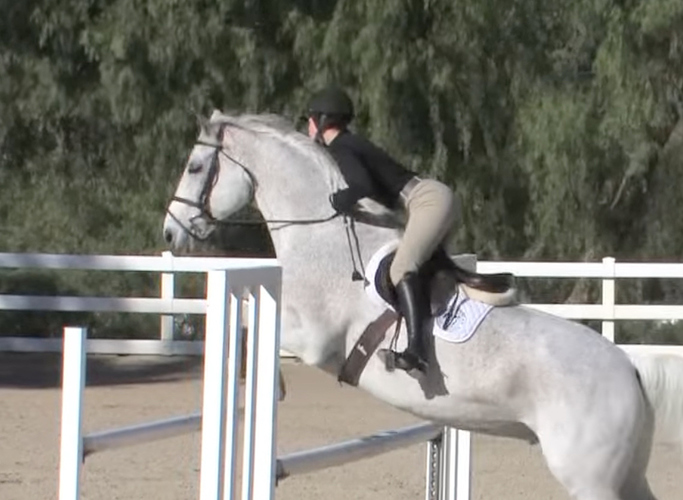If you are a visual learner I really recommend “Form Over Fences” by Jane Marshall Dillon. This marvelous and useful book is not longer in print but it is available on Amazon Books, with their cheapest copy around $10.00 US.
Jane Marshall Dillon taught her young riders with the goal that when they were good enough after the process of grabbing the mane, then resting the hands on the sides of the horse’s neck, to becoming good enough to do a full automatic release (she does not call it the automatic release, it is keeping a LIGHT contact with the horse’s mouth over the jump.) She expected all of her advanced riders to be able to do the automatic release, and every one of her steps in learning to jump a horse had this eventual goal in mind.
This book has over 100 pages of pictures of her students jumping, from the beginning to advanced, with good examples, sort of good examples, minor errors to really awful jumping with paragraphs critiquing each picture.
Since Jane Marshall Dillon taught a rather pure Forward Seat (ala Vladimir Littauer) do not expect to find dressage methods in this book, just good jumping at the right time with the rider acting just enough to allow the horse to jump using his body without being afraid of the rider’s hands.
As far as I know this is the ONLY book to have this type of indepth discussions of the horse and rider going over a jump that also has the pictures showing the perfect, good, barely good and awful rides over jumps.
I no longer jump, but I gave a copy to my riding teacher telling her if my MS ever allowed me to jump again that this book showed exactly how I wanted to jump a horse.








 It’s definitely a different feel, but these riders also are super light in their hand over the fences.
It’s definitely a different feel, but these riders also are super light in their hand over the fences.